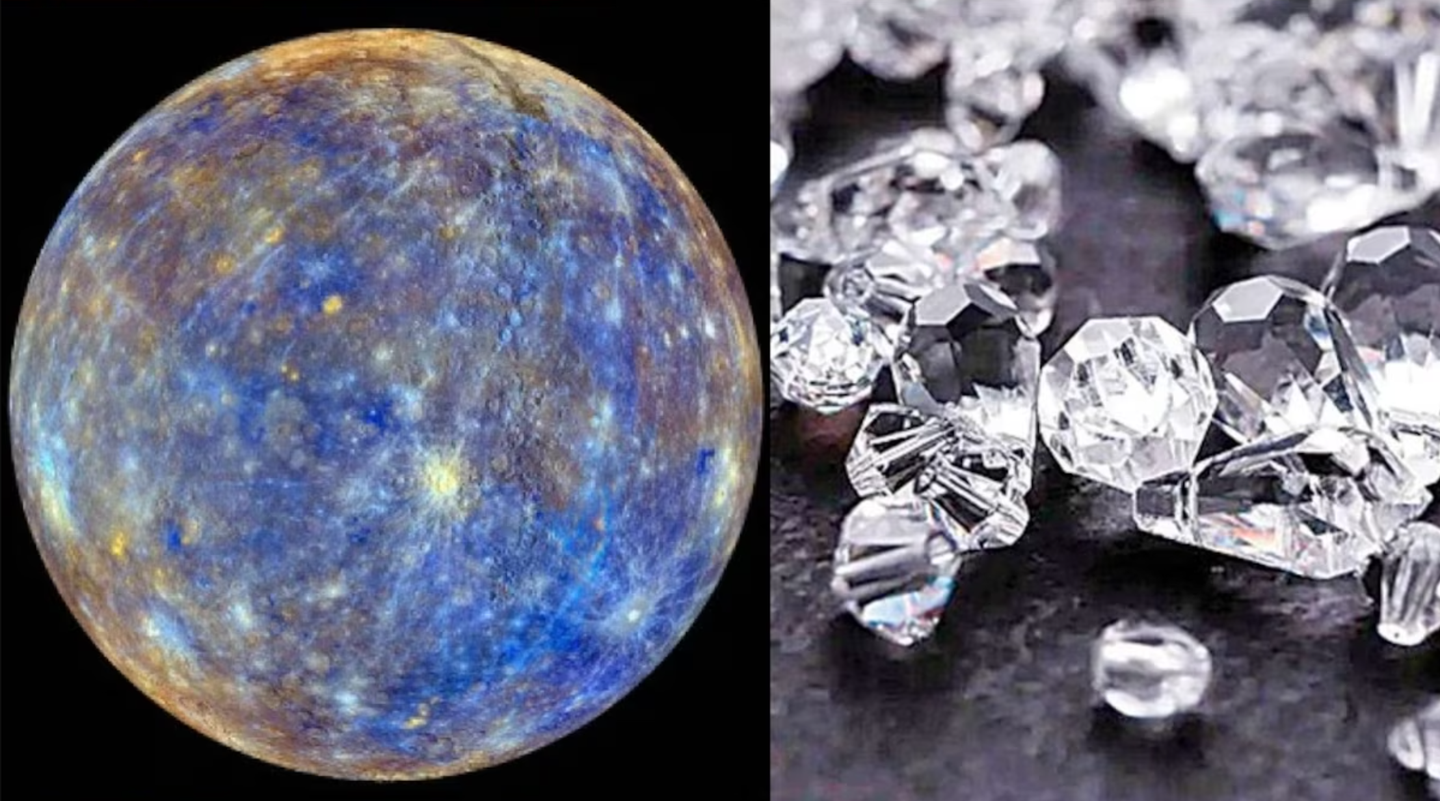Researchers discover the oldest living creature on Earth, originating 700 million years ago
The question of what the earliest animals looked like when they emerged in the oceans half a billion years ago has intrigued biologists.

[Nov. 28, 2023: JD Shavit, The Brighter Side of News]
Hormiphora californensis is among the species raised for research and display by the staff at the Monterey Bay Aquarium. (CREDIT: MBARI)
.
For more than a century, the question of what the earliest animals looked like when they emerged in the ancient oceans over half a billion years ago has intrigued biologists. The quest to identify these ancient ancestors has been a challenging puzzle, with researchers often oscillating between two main contenders: sponges, the stationary filter-feeders, and comb jellies, the voracious oar-propelled predators.
However, a groundbreaking study published this week in the prestigious journal Nature has unveiled a definitive answer: ctenophores, also known as comb jellies, were the first lineage to branch off from the animal tree of life. Sponges followed suit, with the diversification of all other animals, including the lineage leading to humans. This discovery not only reshapes our understanding of early animal evolution but also provides valuable insights into the development of key features in animal biology.
The investigation, led by researchers Daniel Rokhsar from the University of California, Berkeley, Darrin Schultz, and Oleg Simakov from the University of Vienna, delves into the ancient origins of animals, a realm where direct fossil records are absent due to the soft-bodied nature of these early creatures.
Instead, the team turned to genomic comparisons among contemporary animal species to glean insights into our distant ancestors. Rokhsar explains, "The most recent common ancestor of all animals probably lived 600 or 700 million years ago. It's hard to know what they were like because they were soft-bodied animals and didn't leave a direct fossil record. But we can use comparisons across living animals to learn about our common ancestors."
Related Stories
The key to unraveling this ancient mystery lay in understanding the relationships among various animal lineages and determining which group diverged first. To achieve this, the researchers examined an unlikely source: the organization of genes into chromosomes. Each species has a characteristic chromosome number and a unique distribution of genes along these chromosomes.
The team, building on earlier work that revealed the similarity of gene sets among sponges, jellyfish, and various invertebrates, set out to computationally reconstruct the chromosomes of the common ancestor of these diverse animals.
However, ctenophores posed a particular challenge due to the unfamiliarity with their chromosome structure until 2021. Schultz, a former UC Santa Cruz graduate student and now a postdoctoral researcher at the University of Vienna, along with his co-advisers, Richard Green of UC Santa Cruz and Steven Haddock of the Monterey Bay Aquarium Research Institute (MBARI), successfully determined the chromosome structure of the ctenophore Hormiphora californensis. This discovery was pivotal in resolving the ancient evolutionary puzzle.
This tulip sponge in the genus Hyalonema was photographed in 2009 by MBARI’s ROV Doc Ricketts in the outer Monterey Fan at a depth of approximately 3,500 meters. (CREDIT: MBARI)
When the researchers compared the chromosomes of diverse animals and non-animals, they observed a striking pattern. Ctenophores and non-animals shared specific gene-chromosome combinations, while sponges and other animals displayed a distinctly different arrangement of their chromosomes.
Rokhsar describes this as the "smoking gun," indicating that ctenophores branched off the animal tree before the chromosomal rearrangements occurred. These ancient chromosomal signatures persisted in the genomes of animals for hundreds of millions of years, providing clear evidence that ctenophores are the earliest branch of the animal tree of life.
A newly discovered and still undescribed bioluminescent deep-sea sponge observed in 2019 by MBARI’s ROV Doc Ricketts offshore of Central California at a depth of approximately 3,970 meters. (CREDIT: MBARI)
Schultz highlights the significance of this discovery, stating, "The fingerprints of this ancient evolutionary event are still present in the genomes of animals hundreds of millions of years later. This research... gives us context for understanding what makes animals animals. This work will help us understand the basic functions we all share, like how they sense their surroundings, how they eat, and how they move."
To appreciate the importance of this finding, it's essential to understand the broader context of animal evolution. Animals with centralized brains, guts running from mouth to anus, muscles, and other shared features belong to the group known as bilaterians, which includes humans. However, other animals, such as jellyfish, sea anemones, sponges, and ctenophores, possess simpler body plans and lack many bilaterian features like defined brains, nervous systems, or muscles.
Hormiphora californensis, called the California sea gooseberry, is a comb jelly, or ctenophore, common in California coastal waters. Ctenophores have eight sets of cilia running down their side, which they use to propel themselves through the oceans in search of food. This specimen was observed on 2016 by MBARI’s remotely operated vehicle (ROV) Doc Ricketts in the Monterey Canyon at a depth of approximately 280 meters. (CREDIT: MBARI)
Despite these differences, these creatures still exhibit the fundamental characteristics of animal life, including the development of multicellular bodies from a fertilized egg.
The controversy surrounding the order in which these diverse creatures branched off from the main trunk of the animal tree of life persisted for years. Traditional methods based on gene sequences failed to provide a definitive answer due to the deep antiquity of their divergence. As Rokhsar explains, "The results of sophisticated sequence-based studies were basically split. Some researchers did well-designed analyses and found that sponges branched first. Others did equally complex and justifiable studies and got ctenophores. There hasn't really been any convergence to a definitive answer."
The ctenophore Bolinopsis microptera is found worldwide. (CREDIT: MBARI)
Sponges, often considered primitive due to their stationary lifestyle and lack of nerves or muscles, were traditionally seen as the earliest surviving branch of the animal tree. This view suggested a linear progression from unicellular protozoans to sponge-like multicellular organisms, leading to the emergence of all modern animal diversity, including humans.
However, ctenophores, despite their superficial resemblance to jellyfish, offered an alternative perspective. These enigmatic creatures propel themselves with rows of beating cilia, distinct from the swimming mechanism of jellyfish. The discovery that ctenophores, rather than sponges, are the earliest branch of the animal tree challenges our traditional understanding of animal evolution.
The new study shows how the earliest animals (colored boxes) evolved from single-celled protists (top three lines) starting some billion years ago. The living descendants are pictured at right. Ctenophores, not sponges (Porifera), are most closely related to the first animals to branch off from the animal lineage (Metazoa).
This groundbreaking research provides a new lens through which to examine the origins of animal life and offers a fresh perspective on the early branches of the animal tree of life. Understanding these relationships among animal lineages is crucial for deciphering the evolution of key biological features such as the nervous system, muscles, and digestive tracts. As Schultz aptly puts it, "We developed a new way to take one of the deepest glimpses possible into the origins of animal life. This finding will lay the foundation for the scientific community to begin to develop a better understanding of how animals have evolved."
The study highlights the power of genomics in unlocking ancient mysteries and reshaping our understanding of the natural world. While the direct ancestors of animals that emerged over half a billion years ago remain elusive, the genetic clues left behind in the genomes of modern creatures offer a tantalizing glimpse into the distant past. As we continue to explore the intricate web of life on Earth, each discovery brings us one step closer to unraveling the secrets of our shared ancestry with the diverse array of creatures that inhabit our planet.
Note: Materials provided above by The Brighter Side of News. Content may be edited for style and length.
Like these kind of feel good stories? Get the Brighter Side of News' newsletter.



